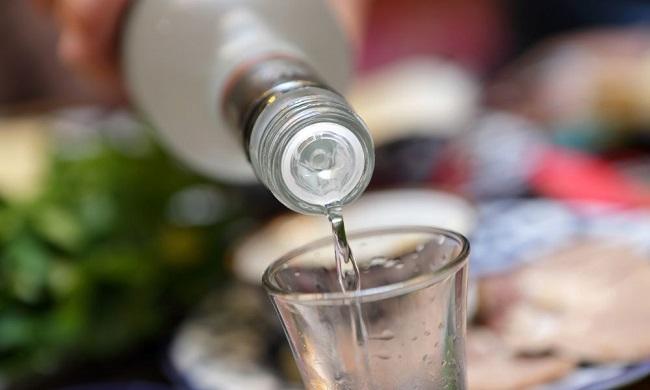Vodka is a staple of many traditional cocktails and one of the most common neutral spirits. Although vodka distilleries can be found all over the world, the spirit is most closely associated with the “vodka belt” countries of Russia, Poland, Sweden, and Finland.
Despite vodka’s traditional grain mash, potatoes have become a popular alternative mash due to their earthy flavor. Please keep in mind that this is meant solely as a resource.
Most states prohibit, without a license, the brewing or distillation of alcoholic beverages. If you’re still interested in learning how potato vodka is manufactured, from the creation of the mash to the final distillation, we’ve outlined all you’ll need to know.

Contents
What Is Vodka?
Vodka is a clear, odorless, and tasteless spirit that is the cornerstone of many popular mixed drinks, such as the Vodka Martini, the Bloody Mary, and the Cosmopolitan. Although the precise time and place of vodka’s inception are unknown, some historians believe the distilled spirit was first used as a medicine in Eastern Europe (possibly Russia or Poland) in the fifteenth century.
Water and ethanol derived from the fermentation of cereal grains (such as wheat, sorghum, or rye) are the two primary ingredients in classic vodka. To give their vodkas a unique flavor, many manufacturers employ components beyond grain alcohol, such as potatoes and sugar beets, and additives like botanicals and spices.
Vodka is filtered and refined to remove contaminants and provide a smooth palate after the fermentation and distillation processes.
What Is Vodka Made From?
One of the simplest alcoholic beverages, vodka just requires the following few components:
Fermentable base: Most alcoholic beverages start out as grain or fruit juice that has been fermented. Although potato vodka is often cited as the original version of the spirit, most vodka is actually made from a combination of cereal grains like wheat, sorghum, or rye. This foundation ferments to produce ethanol, which is then separated from the solid by a series of sieves during the production of vodka.
Water: To reach the necessary alcohol by volume, vodka is diluted with water after distillation. Vodka is defined as an alcoholic beverage with an alcohol by volume (ABV) of at least 40% in the United States, but in the European Union, the ABV threshold is lower at 37.5%.
Optional additives: Some vodka brands add botanicals, spices, or flavorings during or after distillation to give their product a unique flavor profile, even though traditional vodka is flavorless.
How to Make Vodka
Vodka has a long and storied history in English literature, with references dating back to the 18th century. Vodka was originally distilled in Poland, Russia, or Sweden.
Poland, Scandinavia, and the rest of northeastern Europe make comprise what is called “the vodka belt” due to their high vodka consumption and production rates.
Fermentation
The initial step in producing vodka, like with any alcoholic beverage, is fermentation. Sugar is added to yeast during fermentation so that alcohol can be produced. Vodka is made by fermenting plant materials high in sugar or starch with yeast and water.
Rye, wheat, malt, flaked maize, corn, and sorghum are commonly used in vodka blends. Many vodka makers use these grains because they help achieve a flavorless final product.
Distillation
Distillation is the separation of impurities from a liquid by evaporation at high temperatures in a still. Distillation successfully separates the alcohol from the water because alcohol boils at a lower temperature than water.
Many impurities in the liquid are also left behind when it evaporates. When the vapor cools back down to liquid form, it’s much more concentrated in alcohol. Vodka distillers can flavor their product by using botanicals in the distillation process.
Dilution
Distillation typically results in alcohol with an ABV that is too high for human consumption; therefore, dilution is required. Traditional vodkas in the US typically have an alcohol by volume (ABV) of 40%.
The European Union set the minimum alcohol concentration for vodkas at 37.5%, allowing for a modest increase in diluting effects. Some distilleries offer their booze in bottles before it’s been watered down. A product like Everclear, which may reach 190 proof, is the end result of this process.
These spirits have been chemically altered and are not safe for ingestion in their purest form. A safe ABV can be achieved by diluting rectified spirits with water or another liquid. Some states have outright banned the sale of rectified spirits due to safety concerns.
Filtration
Vodka can be filtered either before or after it is watered down. Carbon or charcoal is commonly used in the vodka-making process. Quartz crystals and lava rocks are only two of the media that some distilleries use to filter their vodka.
Filtration is an important step in producing vodka that retains its clarity and purity and won’t cloud over time. While most vodkas are filtered, some more traditional brands are not. To create their premium vodka, these distilleries rely largely on the distillation process.
Flavoring
Vodkas with added flavors can be available in almost any country. When it comes to adding taste, different manufacturers all utilize slightly different approaches. Flavorings like ginger, citrus, vanilla, and chocolate are often added to alcohol after distillation, however some producers choose to add them in during the process.
Russians love their honey and pepper flavored vodkas. Cherry, lemon, black currant, and watermelon vodkas are just a few of the fruity varieties available in Estonia. Krapnik, a honey-flavored vodka popular in Poland and Lithuania, is well-known throughout the region.
Conclusion
Making a bloody mary allows for a lot of creative freedom beyond just the garnishes and ingredients you utilize. If you’re getting to the point where you can call yourself a connoisseur, or you just want to try new things, you might want to try your hand at distilling your own vodka.
It’s not necessary to make it just for bloody marys, but we would be negligent if we didn’t. WikiHow has a great tutorial on making vodka, so we’ve excerpted the relevant sections and put them here for your convenience.
The purpose of this tutorial is to provide you with some of the foundational knowledge necessary to distill your own bottle of vodka. We hope you’ll be encouraged to give home vodka making a try. And then you get to the point when you try out new things like Bacon Infused Vodka. Here you will find out how to make vodka.






![Err_Connection_Reset Error in Chrome [RESOLVED] Fix Err_Connection_Reset Error in Google Chrome](https://howandwow.info/wp-content/uploads/2019/09/Fix-Err_Connection_Reset-Error-in-Google-Chrome.jpg)
![DNS_Probe_Finished_No_Internet Error [RESOLVED] Fix DNS_Probe_Finished_No_Internet Error](https://howandwow.info/wp-content/uploads/2019/09/Fix-DNS_Probe_Finished_No_Internet-Error.jpg)
![Err_Cache_Miss in Google Chrome Error [RESOLVED] Err_Cache_Miss in Google Chrome Error](https://howandwow.info/wp-content/uploads/2019/08/How-to-Fix-Confirm-Form-Resubmission-Error.jpg)








![Steam Missing File Privileges Error [RESOLVED] How to Fix Steam Missing File Privileges](https://howandwow.info/wp-content/uploads/2020/07/How-to-Fix-Steam-Missing-File-Privileges-Error-100x70.jpg)

![SIM Not Provisioned MM#2 Error [RESOLVED] SIM Not Provisioned MM#2](https://howandwow.info/wp-content/uploads/2020/03/SIM-Not-Provisioned-MM2.jpg)








